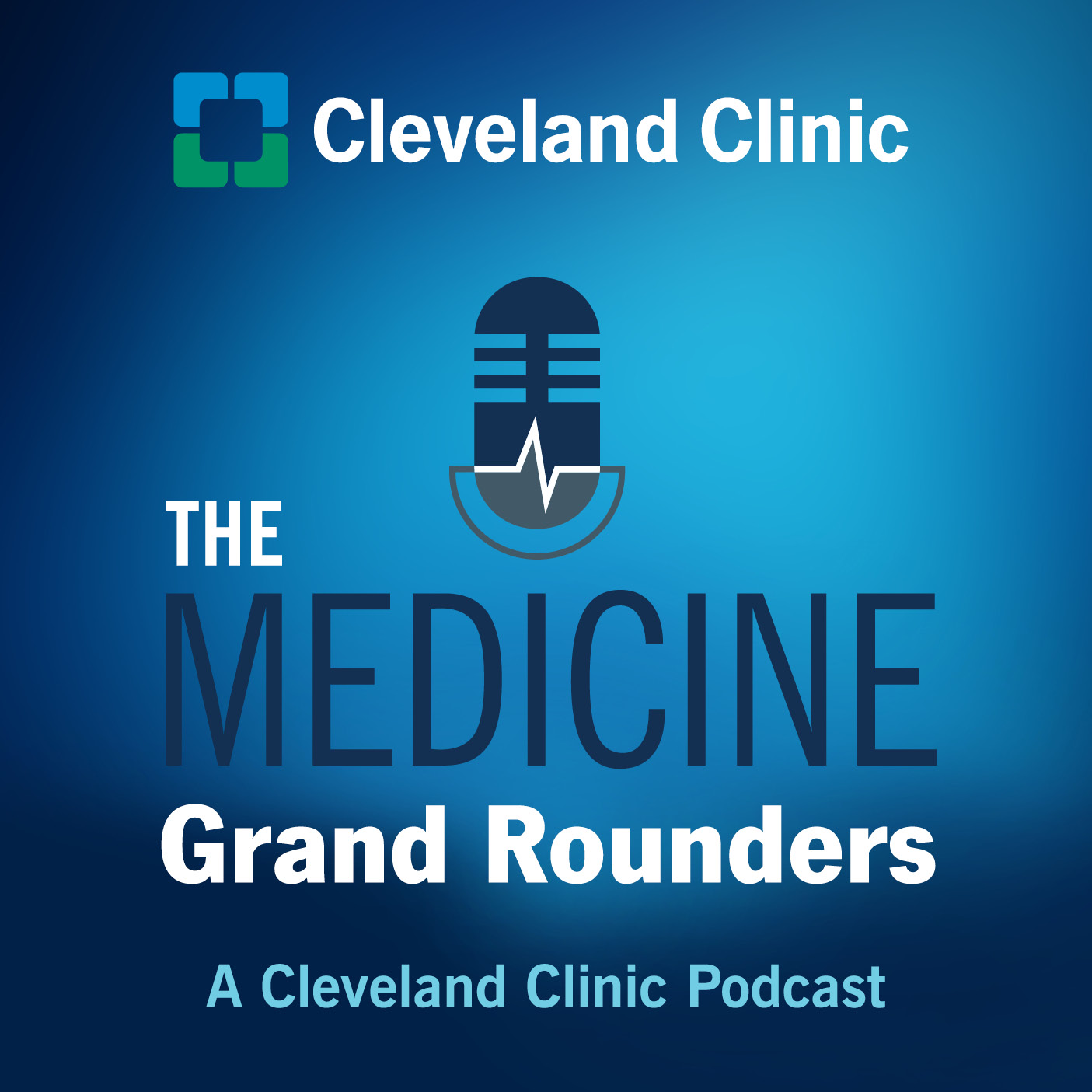Migraine Headaches with Dr. MaryAnn Mays

In this episode of the Medicine Grand Rounders, Dr. MaryAnn Mays takes a deep dive into the world of migraine headaches.
Subscribe: Apple Podcasts | Podcast Addict | Buzzsprout | Spotify
Migraine Headaches with Dr. MaryAnn Mays
Podcast Transcript
Today, we have a wonderful episode planned. We are honored to have with us, Ms. Maeve Pascoe, a rising star in the field of Neurology and MS-5 at the Cleveland Clinic Lerner College of Medicine and bound for Neurology Residency at the University of Michigan.
With her today is our faculty expert and one of our esteemed colleagues in medical education and a world’s expert in Migraine Care, Dr. MaryAnn Mays. Dr. Mays is a beloved member of our teaching faculty in the Neurology Institute, former PD of the Neurology Residency, and now Vice Chair for Education in the NI at CCF. She also holds the appointment of Professor at Cleveland Clinic Lerner College of Medicine within CWRU.
Thank you both for working on today’s show.
To our honored guests, please take a moment to say hi, tell us about yourselves, and start right in on the questions.
Question 1 (Maeve): What distinguishes migraine headaches and how often do patients see primary care providers for migraine headaches?
(Dr Mays) Response
- Migraine headaches are characterized by severe, recurring head pain lasting 4-72 hours with 3-4 different stages accompanied by different symptoms. About 10% of primary care visits are for migraines, making them a prevalent concern for primary care providers, who are often the first point of contact for patients experiencing migraine headaches.
Question 2 (Maeve): What are the distinctive features of migraine headache, and what signs indicate that your patient may be experiencing one?
(Dr Mays) Response
- The ICHD3 diagnostic criteria for episodic migraine include specific characteristics such as unilateral, pulsating pain of moderate to severe intensity, often accompanied by photophobia, phonophobia, nausea, and vomiting. Additionally, up to 30% of patients may experience an aura, typically comprising visual disturbances.
- Some patients may experience chronic migraine which is characterized by headache of 15 or more days per month for at least 3 months, which has the features of migraine headache on at least 8 days per month.
Question 3 (Maeve): You mentioned migraine phases; what are the phases of a migraine, and what symptoms may arise in each phase?
(Dr Mays) Response
- Migraine headaches typically occur in four phases, prodrome, aura, headache, and postdrome, although not everyone experiences each phase. The prodrome may manifest as fatigue, difficulty with concentration, neck stiffness, and sensitivity, often preceding the migraine attack by hours or days. The aura phase involves reversible neurological symptoms, with visual disturbances being most common, which may last up to an hour. The headache phase, marked by intense pain, may last several days if untreated. Finally, the postdrome phase, or post-headache phase is also known as a "migraine hangover," may persist for up to 48 hours, characterized by irritability and cognitive impairment.
Question 4 (Dr. Wardrop): What would your typical differential diagnosis be for a migraine headache, and how would you differentiate between these other types of headaches?
(Dr Mays) Response
- Tension-type headaches, cluster headaches, hemicrania continua, new daily persistent headaches, and medication overuse headaches are among the primary differentials. Distinguishing features include bilateral pain and pressure for tension-type headaches, excruciating unilateral pain with autonomic symptoms for cluster headaches, and continuous unilateral pain with autonomic symptoms responsive to indomethacin for hemicrania continua. If a patient experiences a daily headache and can pinpoint the exact onset date, it raises suspicion for new daily persistent headache.
- It's crucial to remain vigilant for red flags indicating secondary headaches, such as sudden onset, neurological deficits, or systemic symptoms. Positional headaches accompanied by pulsatile tinnitus may suggest other etiologies such as spontaneous intracranial hypotension or if associated with visual alterations, idiopathic intracranial hypertension. Medication overuse headache should be suspect if the patient is taking abortive medications such as over the counter analgesics or triptans more than 10 days a month.
Case Presentation (Maeve): So, we have a patient, a 41-year-old female with no significant past medical history aside from occasional debilitating headaches during times where she is stressed or gets little sleep. They typically occur 1-2 times a month. These are characterized by flashes of light in her vision, followed by a throbbing pain over the right side of her head and nausea for several hours, and a subsequent period of fatigue. The headache does not worsen with positional adjustment and gets better with rest and time. NSAID analgesics are not very effective, so the patient does not take them often. Her only other medication use is oral contraceptive pills (OCPs).
Question 5 (Maeve): What aspects of her presentation make you concerned for migraine, and how would you screen her for migraine?
(Dr Mays) Response
- We typically use the validated ID Migraine screener to assess for migraine, consisting of questions regarding concomitant nausea, photophobia, and incapacity to complete daily activities during headache attacks. If a patient has at least 2 of those 3 symptoms, they likely have migraine, with a positive predictive value of 93% in a primary care setting.
- This patient doesn’t have photophobia, but does have nausea and debilitation from her headaches, so she would screen positively for migraine. Other supporting features of migraine are her visual aura with the flashing lights and unilateral pain with a throbbing quality.
Question 6 (Dr. Wardrop): This patient has aura. How and why do auras occur, and are there any special considerations the primary care provider should be aware of?
(Dr Mays) Response
- Migraine auras are attributed to cortical spreading depression (CSD), which involves a wave of neuronal depolarization followed by suppression. However, CSD occurs in migraine without aura, and so it may be that some individuals experience auras due to a genetic predisposition.
- While auras are typically not in and of themselves harmful, individuals with migraine with aura have a slightly higher risk of stroke and that risk may increase with use of oral estrogen containing contraceptives; so for women who need/want contraceptive options such as this patient, copper IUDs or progestin-only options like the progestin implant, injectable, or pill may be safer alternatives. But it is a discussion with the patient and if a patient opts for estrogen-containing contraception for pregnancy prevention or medical purposes like endometriosis, it's advisable to choose a formulation containing less than 30 micrograms of estrogen.
Question 7 (Dr. Wardrop): What strategies for migraine treatment exist, and what would you recommend for this patient?
(Dr Mays) Response
- General strategies include lifestyle management; which includes avoidance of headache triggers such as certain foods, stress, or routine/sleep disruptions; as well as acute, preemptive, preventative, and rescue treatments.
- Acute treatment aims to stop headache symptoms and progression and typically include nonsteroidal anti-inflammatory drugs, triptans, antiemetics, ergots, calcitonin gene-related peptide antagonists (gepants) and selective serotonin 1F receptor agonists (or ditans).
- Preventative/prophylactic therapies include anithypertensives such as beta blockers, ARBs and CCB, antidepressants both TCA and SNRI, and anticonvulsants, and are indicated for patients with frequent, long-lasting, or disabling migraines (or if acute therapies are contraindicated). Onobotulinum toxin is used for chronic migraine prevention.
- Medications targeting calcitonin gene-related peptide (CGRP), are newer and designed specifically to prevent migraines. Examples include self-administered formulations like erenumab (Aimovig), fremanezumab (Ajovy), and galcanezumab (Emgality), as well as intravenous formulation epitenezumab (Vyepti). Additionally, oral agents like atogepant and rimegepant are used for prevention, taken daily or every other day.
- The American Headache Society advocates for CGRP-targeting therapies as a first-line approach for migraine prevention, regardless of prior treatment outcomes, as outlined in their recently published consensus statement published in Headache. This is based upon their excellent efficacy and safety profile.
Question 8 (Maeve): What migraine treatment research is currently being done, and what treatments can we expect on the horizon?
(Dr Mays) Response
- Many exciting new pharmacotherapies are in trials right now, including agents that act on metabotropic receptors, intracellular targets, and ion channels. For example, pituitary adenylate cyclase-activating polypeptide (or PACAP) has just gone through phase II trials showing a significant reduction in headache days per month, and will likely be the next drug on the market.
- Additionally, neuromodulation devices are showing promising data with 2-hour migraine acute pain relief in up to 67% of individuals as well as preventative relief when used regularly comparable to other preventative therapies.
Case Wrap-up (Maeve): So ultimately, our patient has migraine headache with aura, and interventions such as sleep hygiene improvement, alongside pharmacotherapies such as triptans or gepants, would be recommended. In the future, with ongoing research for new targets for migraine treatment, we might be able to offer additional solutions in the form of drugs or devices to provide further relief and potential for migraine freedom!

The Medicine Grand Rounders
A Cleveland Clinic podcast for medical professionals exploring important and high impact clinical questions related to the practice of general medicine. You'll hear from world class clinical experts in a variety of specialties of Internal Medicine. Hosted by Richard Wardrop, MD, PhD and Arjun Chatterjee, MD.

